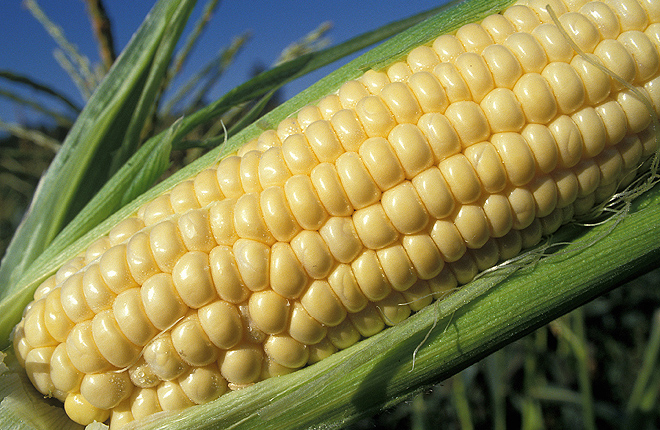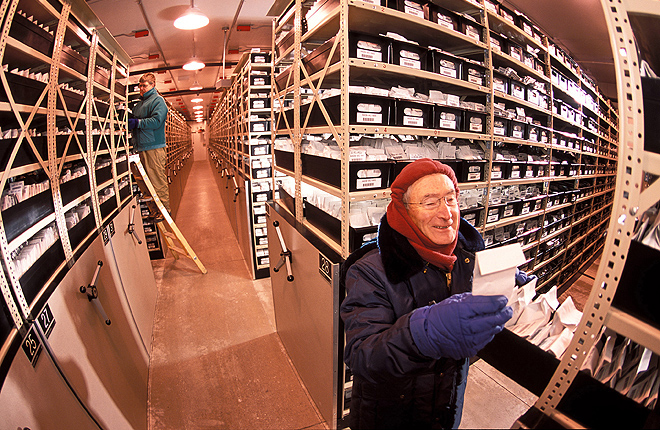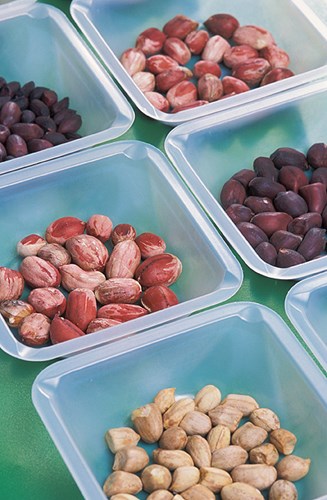Planting the Genes for Our Future
The sixth and final article in our series on the vital contributions of the ARS collections that conserve our genetic wealth. See Germplasm Collection Series under Additional Information.
The oldest known record of plant introductions recounts Sumerian King Sargon painstakingly bringing back tree, vine, fig, and rose specimens from Asia Minor in about 2,500 B.C.
Millennia later, collecting and conserving crop varieties and their relatives is more essential than ever. Modern agricultural varieties help feed the world’s burgeoning population and help produce lower-cost foods on ever-decreasing acreage. But these benefits have come at a price: genetic uniformity in crops, which can lead to greater vulnerablity to pests, diseases, and environmental changes.
Some of the answers to these problems lie in the Agricultural Research Service’s (ARS) plant germplasm collections. These storehouses of genetic resources help us meet the ongoing challenges of producing new varieties for food, fiber, animal feed, fuel, landscaping, and industrial and medicinal use. With more than 570,000 accessions (unique samples) of 15,000 plant species, the ARS National Plant Germplasm System (NPGS) is one of the world’s largest genebank networks.
|
|
NPGS collections have provided immense rewards over the decades. For example, “The corn we take for granted today that stays sweet through days of shipping was unknown in the 1950s and earlier, when sweet corn’s sugar started turning to starch and losing flavor minutes after being pulled from the stalk,” explains ARS geneticist Martin M. Sachs, director of the Maize Genetics Cooperation Stock Center in Urbana, Illinois.
It was from this collection that University of Illinois geneticist John Laughnan got a corn line with a special shrunken2 mutant gene (sh2), originally discovered and donated by University of Michigan professor Edwin B. Mains. Laughnan was studying a different gene on the same chromosome as the sh2 gene. While shelling a cob of sh2 corn, Laughnan chewed on a raw kernel and found it was still sweet, because the sh2 gene had stabilized the sugar. The progenitor of today’s prized Supersweet varieties was found; the rest was sweet history.
Many accessions in the NPGS collections are “landraces”—historical crop types adapted to local environments by farmers rather than by formal breeding—or wild crop relatives. For instance, in the maize collection are accessions of Cuzco, a landrace from highland Peru. “In 1971, Iowa State University maize breeder Bill Russell crossed inbred corn line B14 with a Cuzco, which contributed resistance to common rust, a significant challenge for U.S. growers, and developed inbred line B14A,” says Candice Gardner, research leader of the Plant Introduction Research Unit in Ames, Iowa, where the collection is housed. B14A became an ancestor of many major corn hybrids grown around the world.
Plant pathogens and pests aren’t static; they’re always evolving to conquer a plant’s genetic resistance. Breeders work to improve disease resistance, and they often find new sources of genetic resistance in ARS’s germplasm collections.
When the virus causing rhizomania in sugar beets arrived here in the 1980s, all resistance depended on a single gene. Expecting the virus to overcome that gene eventually, breeders sought new sources of resistance genes. These included a sugar beet collected in Turkey in 1952 and another from Denmark collected in 1985, both in the Western Regional Plant Introduction Station collection. By 2002, when the virus had indeed overcome the resistance gene, new sugar beet varieties already contained the next line of defense.
A single accession can sometimes have remarkable impact. Since 1987, peanut growers in the southeastern United States, where more than half of the country’s peanuts are produced, have battled tomato spotted wilt virus (TSWV). Because chemical control isn’t feasible, breeding for resistance is best. Fortunately, one accession among the nearly 10,000 in the NPGS peanut germplasm collection in Griffin, Georgia, held the key. PI 203396 was collected from a market in Porto Alegre, Brazil, in 1952.
Forty-three years later, breeders at the University of Georgia incorporated PI 203396’s TSWV resistance into a new peanut variety called Georgia Green, released in 1995. Georgia Green dominated southeastern peanut acreage for several years. Thirty other varieties with PI 203396 genes followed.
This single accession has helped the economy to the tune of more than $200 million annually.
Scientists often collect germplasm without knowing specific future needs, but they are thinking ahead. For example, since it first appeared in North America in 2002, the emerald ash borer (EAB) has killed hundreds of millions of ash trees. Researchers have not found a way to stop it. ARS has partnered with the USDA Forest Service, universities, arboreta, and others to expand systematic germplasm collection aimed at preventing the loss of ash species. Since 2007, the ash collection has grown by 310 accessions, representing 12 species from 33 states. When an EAB solution is found, reforesting could be possible with ash varieties bred from stored germplasm. If similar collecting had been done when Dutch elm disease first hit the country in 1931 or when American chestnut blight came in 1905, U.S. forests and wooded landscapes might look very different today.
Having the germplasm is only part of the job. Researchers also need to determine an accession’s physical traits and its underlying genetic information and then make the data accessible to potential users. That’s no small task when it involves billions of pieces of data for hundreds of thousands of accessions.
When you have one of the world’s major germplasm systems, with material freely available to scientists, more and more requests arrive every year. Last year, about 250,000 samples were shipped to 61 countries. The ARS National Germplasm Resources Laboratory in Beltsville, Maryland, facilitated many of the requests. Supplying this germplasm will help plants improve pest, disease, and drought tolerance; adapt to new growing conditions; and be more productive or nutritious—or just better tasting.—By J. Kim Kaplan, ARS Office of Communications.
“Planting the Genes for Our Future” was published in the June 2016 issue of AgResearch Magazine.
Key Facts
- The ARS National Plant Germplasm System is one of the world’s largest genebank networks.
- A single specimen from a germplasm collection can prove to be valuable decades later.
- In 2015, ARS shipped about 250,000 germplasm samples to scientists in 61 countries.
Full Story












